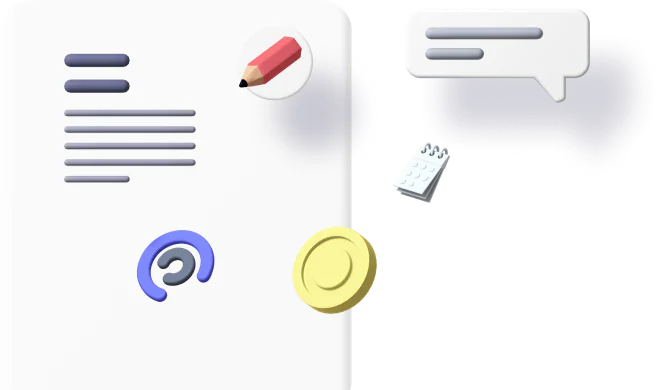
The world of technology is buzzing with innovation, and at the heart of it all is the no-code revolution. Imagine a world where creating software is as simple as dragging and dropping elements on a screen—no coding experience is required. No-code platforms are transforming how businesses operate, innovate, and scale, empowering teams to bring their ideas to life faster. As we approach 2025, the stakes are clear: businesses not leveraging no-code solutions risk falling behind their competitors.
In this blog, we’ll dive deep into what no-code means, why it’s reshaping industries, standout tools like MindStudio, real-world success stories, and how businesses can prepare to embrace this transformative shift.
What is No-Code, and Why Should You Care?
No-code platforms are the ultimate democratizers of technology. They allow anyone—yes, even those who’ve never written a line of code—to build applications, automate processes, and solve complex problems. Instead of relying on a team of developers, no-code tools use visual interfaces with drag-and-drop functionality, making it accessible for non-technical users, also known as “citizen developers.”
So, why should you care? Because no-code tools are fast, cost-effective, inclusive, and future-proof. Gartner predicts that by 2025, 70% of new applications will be developed using low-code or no-code technologies. This shift means that businesses can build and deploy solutions in days, not months, say goodbye to hefty development budgets, empower diverse teams to innovate without technical barriers and stay ahead of the curve.
The Driving Forces Behind the No-Code Revolution
Why is no-code growing so rapidly? The answer lies in four key factors:
- Speed and Agility: In today’s hyper-competitive market, speed is everything. No-code platforms enable businesses to iterate quickly, adapt to market demands, and seize opportunities faster than ever.
- Cost Efficiency: Hiring developers is expensive. No-code reduces reliance on specialized talent, allowing businesses to allocate resources more strategically.
- Empowering Creativity: With no-code, creativity isn’t limited by technical know-how. Teams from marketing, operations, and sales can turn ideas into actionable solutions.
- The Democratization of Technology: No-code breaks down barriers, making technology accessible to everyone. It’s a tool that levels the playing field for startups and small businesses competing with enterprise giants.
Top No-Code Tools Transforming Businesses
Let’s spotlight some of the game-changing no-code platforms that are leading this revolution:
- MindStudio: MindStudio is a powerhouse in the no-code space, offering unmatched flexibility for building custom business applications. Whether it’s project management tools, e-commerce platforms, or data dashboards, MindStudio has you covered. Key features include seamless integrations with HubSpot, Airtable, and other CRMs, AI-driven automation for smarter workflows, and enterprise-grade security for peace of mind.
- Webflow: Known for its stunning design capabilities, Webflow allows businesses to create pixel-perfect, responsive websites without writing a single line of code. Key features include advanced design tools for complete customization, a built-in CMS for dynamic content, and e-commerce functionality to power online stores.
- Make (formerly Integromat): Make is the ultimate automation tool for streamlining repetitive tasks. It connects apps and automates workflows effortlessly. Key features include a visual workflow builder for intuitive setups, thousands of integrations with popular apps, and robust error-handling mechanisms for reliability.
- Bubble: Bubble takes no-code to the next level by enabling full-stack application development. Build everything from MVPs to fully scalable SaaS products. Key features include custom databases for dynamic applications, API connectors for advanced integrations, and scalable infrastructure for growing businesses.
- Softr: Revolutionizing Automation with No-Code Power. Softr is at the forefront of the no-code revolution, empowering businesses to automate processes and build applications effortlessly. With its intuitive drag-and-drop interface, seamless integrations, and cost-effective solutions, Softr is changing the game in automation. Here’s why Softr stands out and how it compares to other leading no-code platforms like MindStudio and Make.
- Benefits of Soft Ease of Use: Softr’s user-friendly interface allows anyone to create custom applications quickly, regardless of technical expertise. Seamless Integrations: Easily connect with popular tools like Airtable, HubSpot, and Zapier to streamline workflows and enhance productivity. Cost-Effective: Develop and deploy applications at a fraction of the cost of traditional software development, enabling strategic resource allocation. Empowering Innovation: Softr democratizes application development, allowing non-technical users to automate processes and drive innovation.
Real-Life Case Studies: No-Code in Action
Nothing illustrates the power of no-code better than real-world success stories. Here are some businesses that have leveraged no-code to transform their operations:
Case Study 1: Revolutionizing Logistics with Automation
A mid-sized logistics company used Make and Airtable to automate delivery tracking and customer communications. The result? A 40% reduction in delivery delays and a significant boost in customer satisfaction—all without a single developer on their team.
Case Study 2: Scaling E-Commerce with Webflow
A boutique clothing brand expanded globally in just six months by leveraging Webflow to build a multilingual, multi-currency website. Integrating with Shopify, they managed inventory seamlessly and reached new markets effortlessly.
Case Study 3: Streamlining HR Processes with MindStudio
A fast-growing startup created a custom HR portal using MindStudio. Features like employee onboarding workflows, time-off requests, and performance tracking reduced HR processing times by 60%, freeing up time for strategic initiatives.
Who is leading the way?
Softr
Benefits:
- Ease of Use: Softr’s intuitive drag-and-drop interface makes it incredibly user-friendly, perfect for beginners and those with limited technical skills.
- Seamless Integrations: Softr integrates seamlessly with popular tools like Airtable, Google Sheets, and Zapier, allowing users to leverage their existing data effortlessly.
- Cost-Effective: Softr offers affordable pricing plans, making it an attractive option for startups and small businesses with limited budgets.
- Pre-Built Templates: With a variety of pre-built templates optimized for web, mobile, and tablet devices, Softr enables quick and easy application development.

Drawbacks:
- Limited Complexity: Softr is more suited for simple to moderately complex applications. For highly complex projects, it may fall short compared to other platforms15.
MindStudio

Benefits:
- Flexibility: MindStudio offers unmatched flexibility for building custom business applications, from project management tools to e-commerce platforms.
- AI-Driven Automation: The platform features AI-driven automation for smarter workflows, enhancing productivity and efficiency.
- Enterprise-Grade Security: MindStudio prioritizes security, providing enterprise-grade protection for user data.
Drawbacks:
- Learning Curve: While powerful, MindStudio may require some time to master, especially for users new to no-code platforms.
- Pricing: Specific pricing details are not readily available, which may be a consideration for budget-conscious users.
Make (formerly Integromat)
Benefits:
- Powerful Automation: Make excels in automating repetitive tasks and connecting disparate systems with its visual workflow builder.
- Extensive Integrations: With thousands of integrations with popular apps, Make offers robust error-handling mechanisms for reliable automation.
- Real-Time Collaboration: Make allows collaboration with over 40 team members, enabling real-time work on applications.
Drawbacks:
- Complexity: The extensive features and capabilities of Make can be overwhelming for beginners, requiring a steeper learning curve.
- Pricing: While Make offers a free plan for testing, launching applications with a custom domain requires upgrading to a paid plan, which can add to the cost.

Bubble
Benefits:
- Unmatched Flexibility: Bubble provides over 1,000 building blocks designed for various types of applications, allowing for highly customized and complex web apps.
- Full Backend and Logic: With access to a full backend, logic, and API integrations, Bubble enables the creation of sophisticated web apps tailored to specific requirements.
- Extensive Plugin Marketplace: Bubble offers a broad range of integrations through its extensive plugin marketplace, enhancing functionality and customization options.
Drawbacks:
- Steep Learning Curve: Bubble’s powerful features come with a steep learning curve, making it challenging for new users to master.
- Performance Issues: Large applications built on Bubble can experience performance slowdowns, which may impact user experience.
Which Platform is Leading the Way?

Innovation and Features: Bubble stands out as the leader in innovation and features. Its unmatched flexibility, full backend access, and extensive plugin marketplace make it a powerful tool for creating complex and customized web applications. However, this comes with a steep learning curve and potential performance issues for large apps.
Pricing: Softr offers the most cost-effective solutions, with affordable pricing plans and a free custom domain for all users. This makes it an attractive option for startups and small businesses with limited budgets.
Ease of Use: Softr is the easiest to start and learn, thanks to its intuitive drag-and-drop interface and pre-built templates. It is perfect for beginners and those looking to create simple to moderately complex applications quickly123.
Why No-Code is the Future of Innovation
No-code isn’t just a trend; it’s a seismic shift in how businesses innovate. Here’s why:
Levelling the Playing Field: Startups and small businesses can now compete with enterprise giants without massive budgets.
Driving Digital Transformation: Legacy processes are being replaced with agile, automated systems that can adapt to change.
Boosting Productivity: Teams spend less time on manual tasks and more time on strategic initiatives.
Tim’s Web Worx: Leading the No-Code Charge
At Tim’s Web Worx, we’re not just embracing the no-code revolution—we’re leading it. Our mission is simple: to empower businesses to design, build, and automate their future with ease. By leveraging tools like MindStudio and Make, we help our clients achieve cost-effective solutions, expert guidance, and seamless integration. Our slogan says it all: Designing your future—taking you beyond your imagination.
Preparing for 2025 and Beyond
The clock is ticking, and the no-code revolution is here to stay. Businesses that embrace these tools will thrive, while those that hesitate may struggle to keep up. Whether you’re a small business owner, a startup founder, or part of a large enterprise, now is the time to take action.
At Tim’s Web Worx, we’re here to guide you through every step of this journey. Ready to leap? Let’s build the future together.
Contact Us Today to discover how no-code can transform your business.
FAQs
- What industries can benefit from no-code platforms?
Virtually every industry can leverage no-code tools, from e-commerce and logistics to healthcare and education. If your business has processes to streamline or ideas to bring to life, no-code is for you.
- Are no-code platforms secure?
Yes, most reputable no-code platforms, like MindStudio, prioritize enterprise-grade security to protect your data.
- How much does it cost to use no-code tools?
Costs vary depending on the platform and features, but no-code tools are generally more affordable than traditional development methods.
- Can I integrate no-code tools with my existing systems?
Absolutely! Tools like Make and Bubble offer robust integration capabilities to work seamlessly with your current tech stack.
- Do I need technical skills to use no-code platforms?
Not at all! That’s the beauty of no-code. These platforms are designed to be intuitive and user-friendly, making them accessible to everyone.







